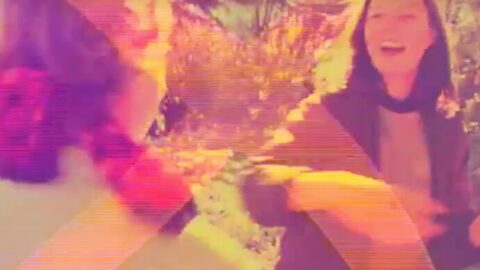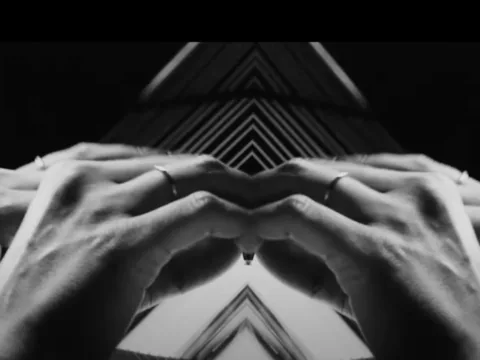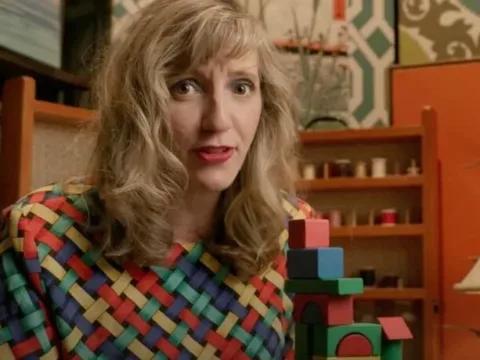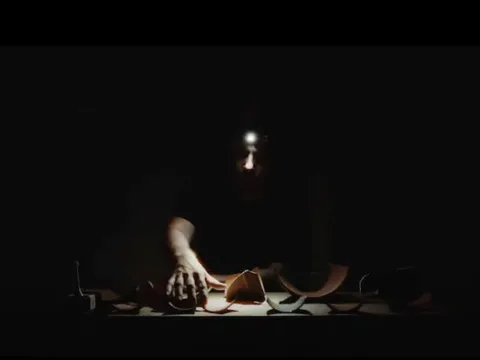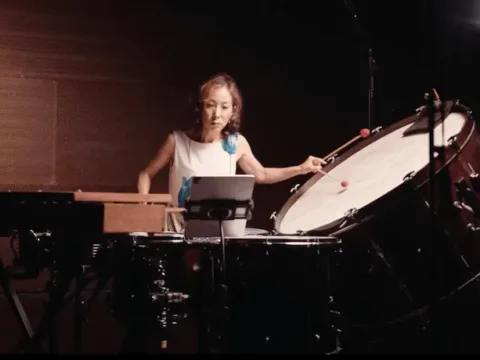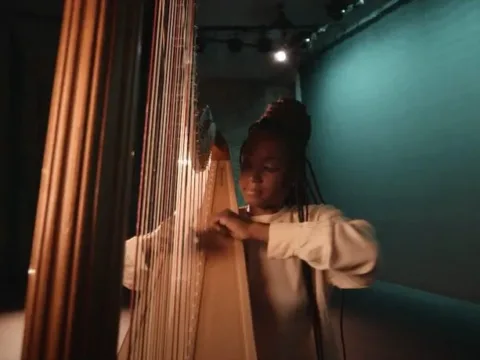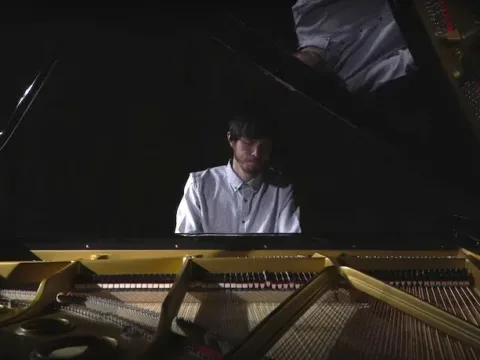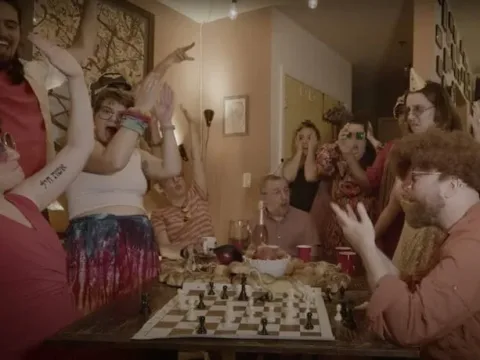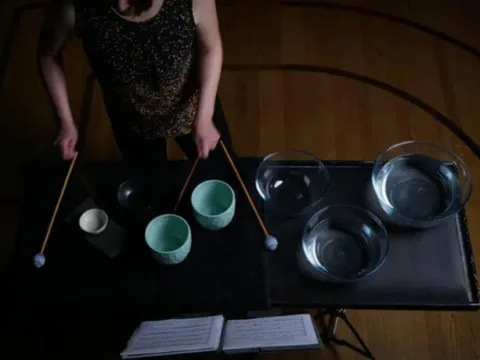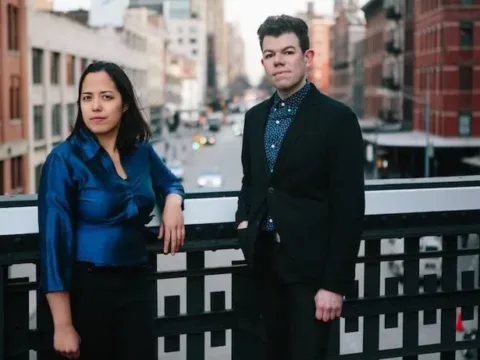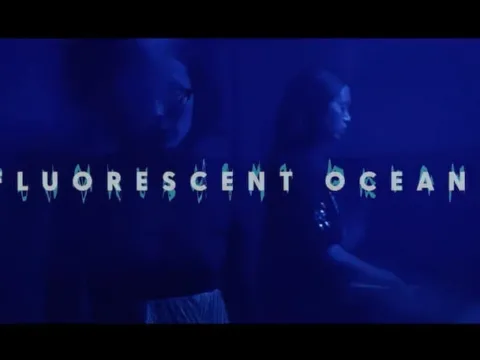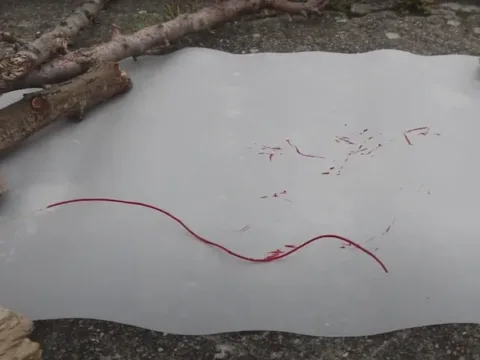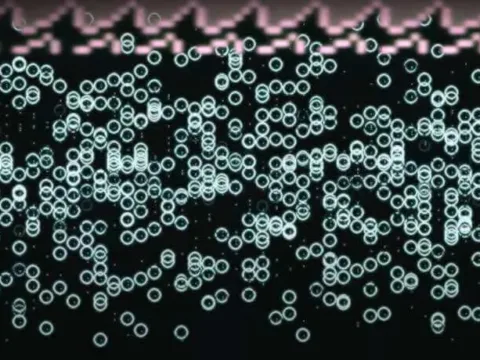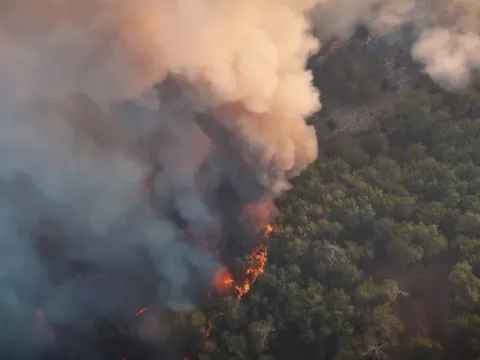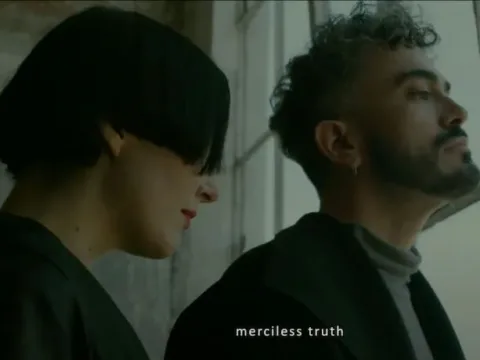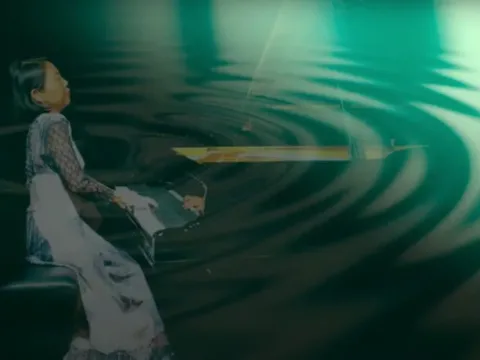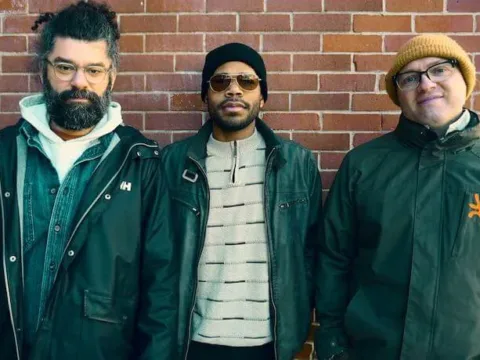Today’s video premiere, Would the Miracle Ever Come?, is a collaborative project from composer Niloufar Nourbakhsh, songwriter Pamela Martinez a.k.a. Teletextile, and video artist Naomi Moser.
Here’s what Niloufar had to say about the project:
The women who make up this collaboration come from very different worlds. I am an Iranian contemporary classical composer, and Pamela is a Mexican-American orchestral influenced songwriter from Texas based in NYC. This collaboration started with the goal of exploring answers to the BIG questions. Using a vintage toy reel-to-reel tape recorder, I recorded myself asking the questions that shape life: “What is love?” “What is your biggest fear?” “Would the miracle ever come?” and Pamela recorded her voice in response to my questions, giving guidance to a friend like a sister or a mother.
From these recordings, we built a soundscape of two different worlds like audio pen pals. Naomi Moser joined the collaboration to add a visual element. The footage includes scenes of Moser’s own mother in her youth, exploring answers from a different time and generation.
About Niloufar Nourbakhsh
Described as “stark” by WNPR, Iranian composer Niloufar Nourbakhsh’s music has been commissioned and performed by Symphony Number One, Spark and Echo Project, Women Composers Festival of Hartford, Pianist Erika Dohi for Metropolis Ensemble Piano Series, Calidore and Cassatt String Quartets, Akropolis Reed Quintet, and Invoke Quartet at numerous festivals including I-Park Foundation Residency, Atlantic Music Festival, Seal Bay Festival of American Chamber Music, SPLICE institute, New Music for Strings, MusLab electroacoustic festival in Mexico, University of Tennessee Contemporary Festival and more. Nilou is founder of Iranian Female Composers Association and a strong advocate of music education. She has worked as the site coordinator of Brooklyn Middle School Jazz Academy sponsored by Jazz at Lincoln Center. She is currently a Teaching Artist for NY Philharmonic Very Young Composers program.
Nilou is a Global Citizen Scholarship recipient of Goucher College as well as a Mahoney and Caplan Scholar from University of Oxford. Among her teachers are Lisa Weiss, Laura Kaminsky, Daniel Weymouth and Daria Semegen. She is currently pursuing her Doctorate degree in music composition at Stony Brook University under the supervision of Sheila Silver.
About Pamela Martinez
Pamela Martinez is a reiki master, teacher, multi-instrumentalist and songwriter who creates music under the moniker Teletextile. Her “Bjork-like” sound (The Boston Globe) moves from vocal layering and “electronic wizardry” (Metronome Magazine) to “dense, stormy guitar, piano and electronics” (Time Out New York). Martinez has toured extensively in the US, Europe, the UK and Asia. As a genre-hopping musician, Martinez has performed violin at Carnegie Hall with a Carnatic Indian music ensemble, sang in San Francisco’s historic Fillmore Theater and takes part in extravagant performance art happenings in New York City. At home in Brooklyn, Martinez passes on the craft of music to her community by teaching violin, voice, piano, guitar, music theory and sound healing to all ages and levels of students at Brooklyn Music School and the Maha Rose Community.
About Naomi Moser
Naomi Moser is an American video artist based in Detroit. She received her BA in Media Studies from Scripps College in Los Angeles in 2013 and is an MFA candidate at Cranbrook Academy of Art. She has participated in Art residencies in Spain and Lebanon.
Moser’s current video work discusses her insider/outsider identity both as a privileged white person and as a Jewish person who has inherited anxiety. Moser has been researching the Jewish traveler as a historical figure, as a fluid archetype and as herself. Because of Judaism’s long history and the far reaches of its diaspora, Moser has found that she represents different things in different places to different people. Her content and aesthetic contend with the intersection of travel and the performance of Jewish American identity. Setting her scenes to themes of escapism, in the forms of vacation and nightlife, she disarms the viewer with an approachable and campy aesthetic, while simultaneously discussing her anxiety around her unstable subjectivity and the inheritance of memory.
